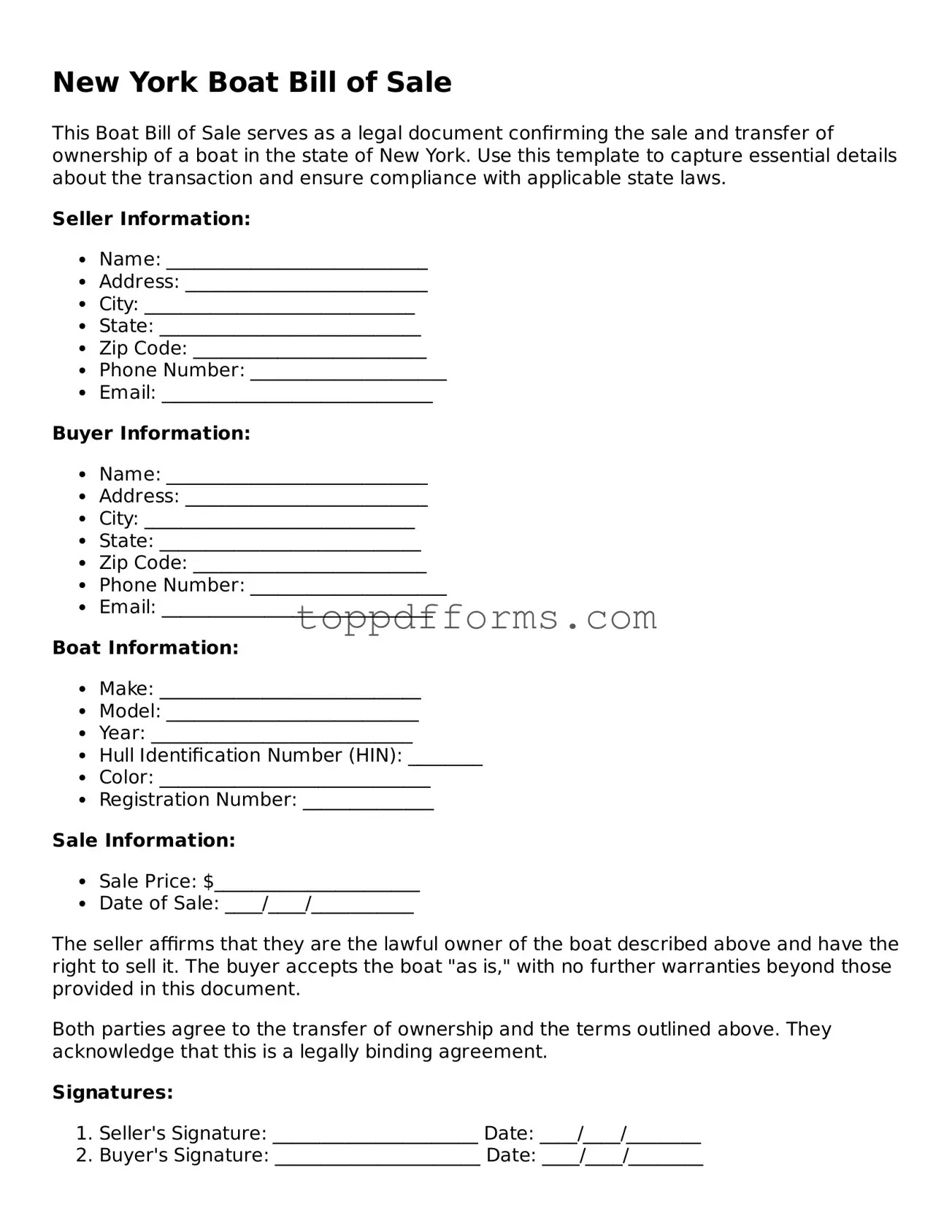What is a New York Boat Bill of Sale?
A New York Boat Bill of Sale is a legal document that serves as proof of the transfer of ownership of a boat from one person to another. This form includes essential details such as the names of the buyer and seller, a description of the boat, the purchase price, and the date of the transaction. It is important for both parties to have this document to protect their interests and to ensure a smooth transfer of ownership.
Why do I need a Boat Bill of Sale in New York?
Having a Boat Bill of Sale is crucial for several reasons. First, it provides legal evidence that the buyer has purchased the boat and that the seller has relinquished ownership. This document can be required for registration purposes with the New York State Department of Motor Vehicles (DMV) or for obtaining a title. Additionally, it can help resolve any disputes regarding ownership in the future. Without it, proving ownership can become complicated.
What information should be included in the Boat Bill of Sale?
A comprehensive Boat Bill of Sale should include the following information: the full names and addresses of both the buyer and seller, a detailed description of the boat (including the make, model, year, and hull identification number), the purchase price, the date of the sale, and any warranties or conditions of the sale. Both parties should sign the document to make it legally binding. Including this information helps ensure clarity and protects both parties involved in the transaction.
Is the Boat Bill of Sale required to register my boat?
Yes, in New York, a Boat Bill of Sale is typically required for registering your boat with the DMV. When you apply for registration, you will need to present this document along with other necessary paperwork, such as proof of identification and any applicable fees. Having a properly completed Bill of Sale simplifies the registration process and helps to ensure that you are in compliance with state regulations.
Can I create my own Boat Bill of Sale?
Yes, you can create your own Boat Bill of Sale as long as it includes all the necessary information and meets the requirements set by New York state law. However, using a template or a professionally prepared form can help ensure that you don’t overlook any important details. It’s always a good idea to review the document carefully before signing to make sure that everything is accurate and reflects the terms of your agreement.
